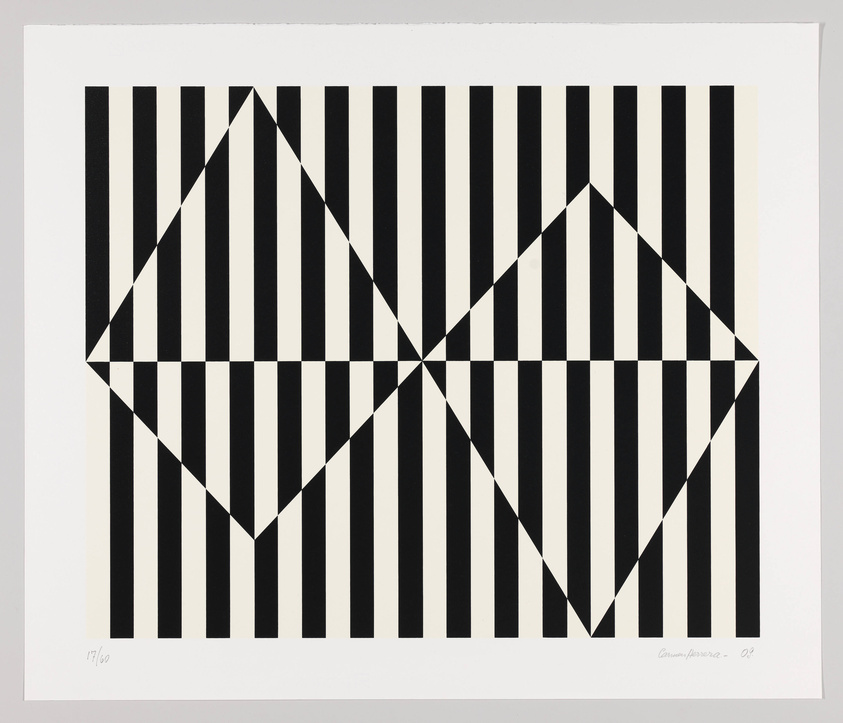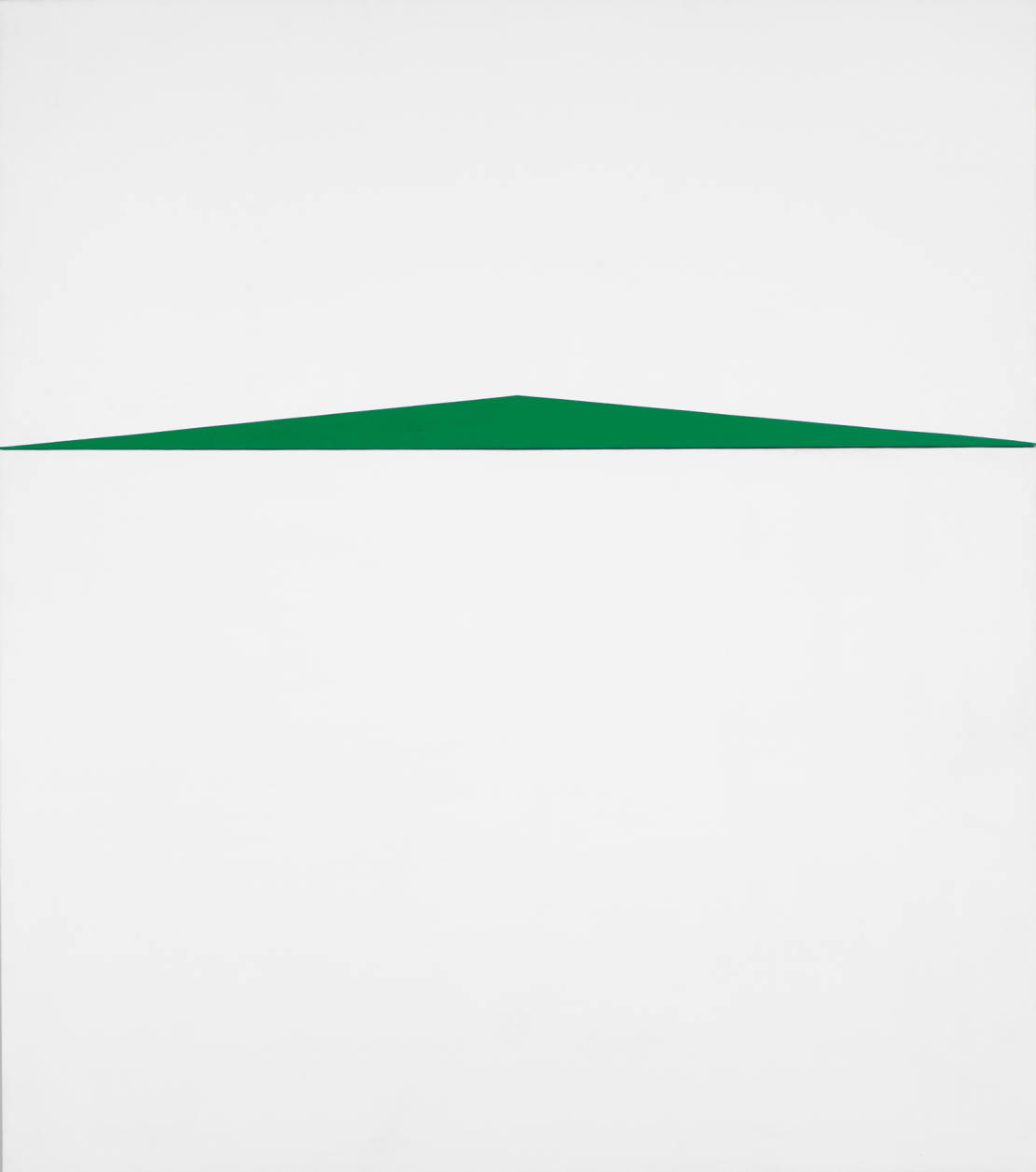Carmen Herrera, Untitled, 1952
Sept 16, 2016
0:00
Carmen Herrera, Untitled, 1952
0:00
Dana Miller: In 1952, Herrera makes this leap, this breakthrough with a series of black and white paintings that she makes in Paris. You see here in Untitled that she's reduced her composition to just two colors, black and white.
There's this diagonal almost W, this zigzag that goes through the painting, but it's not actually made through a line. It's made through the reversal of colors, the stripes reverse. So what she's done was basically eliminate any sort of outline in her work and reduce the entire form to blocks of color, stripes of color.
She's also started to incorporate the frame into her composition. If you look carefully, the wooden frame that wraps around the painting is actually painted as well. She's creating this pattern using the frame.
The third thing that she's doing is using different panels. She's found a way to render line, not just with paint, but with the edge of the canvas. And the division, the separation between the two panels is another way of rendering a line without actually making a line.
This was really, really innovative at the time. For somebody to be thinking about the painting as more of an object and using the canvas not to depict something as if the painting were a window onto the world, but to draw attention to the actual physical aspects of the painting was pretty revolutionary.


